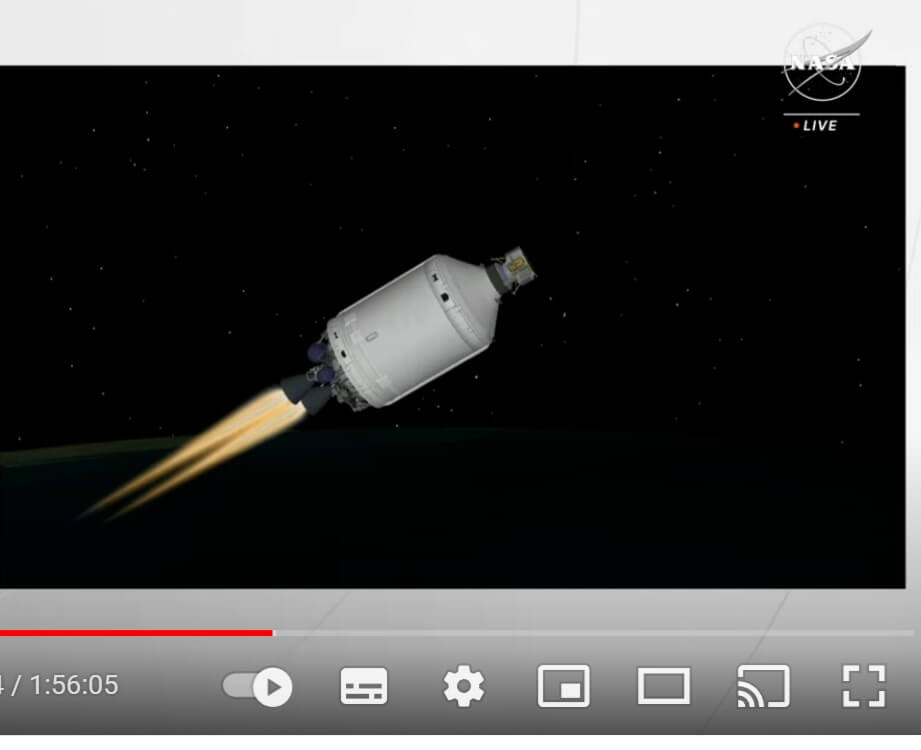The Peregrine lander is carrying a variety of scientific instruments to study the radiation and soil composition on the moon, along with an unusual payload that includes a small rover, a bitcoin coin, and the ashes and DNA of several celebrities - including Star Trek creator Gene Roddenberry
For the latest news about the malfunction that prevents the spacecraft from landing on the moon

Earlier today, January 8, 2024, the lunar lander Peregrine, the first American lunar lander in more than 50 years, was launched from Canaveral, Florida. The lander, built by the robotics company Astrobotics, was launched on the maiden flight of the new Vulcan launch vehicle of the United Launch Alliance company. The Peregrine lander is scheduled to land on the moon on February 23, 2024, making the first soft landing by a private company on the moon.
The Peregrine lander is carrying a variety of scientific instruments to study the radiation and soil composition on the moon, along with an unusual payload that includes a small rover, a bitcoin coin, and the ashes and DNA of several celebrities - including Star Trek creator Gene Roddenberry.
The mission marks the beginning of a new era in lunar exploration, where NASA is trying to recruit commercial companies to perform landings and research on the moon instead of doing it itself. The purpose of the move is to pave the way for the return of American astronauts to the moon as part of NASA's Artemis program in 2025, and to establish a permanent human presence on the moon.
The Peregrine lander is carrying a variety of scientific instruments to study the radiation and soil composition on the moon, along with an unusual payload that includes a small rover, a bitcoin coin, and the ashes and DNA of several celebrities - including Star Trek creator Gene Roddenberry.
The launch of the lander was carried out on the maiden flight of the new Vulcan launch vehicle developed by ULA, a joint venture of Boeing and Lockheed Martin. The Vulcan rocket was developed to replace ULA's aging launchers and compete with SpaceX's Falcon 9, which lands the launchers back and uses them multiple times. The success of the mission is critical for ULA, which is trying to maintain market share in launching government and military satellites.
CLPS project - commercial cargo service to the moon
Peregrine is flown through the Commercial Lunar Payload Services (CLPS) initiative. As part of this initiative, NASA is working with a number of American companies to provide pre-lunar science and technology through. Companies of various sizes will compete for the transfer of probes for NASA, including the integration and operation of probes, launch from Earth and landing on the surface of the moon.
Under Artemis, commercial shipments starting in 2023 will be used to conduct scientific experiments, test technologies and demonstrate capabilities that will help NASA explore the moon and prepare for human missions.
CLPS contracts are indefinite delivery, unlimited quantity contracts with a maximum aggregate contract value of $2.6 billion through 2028.
NASA's Commercial Lunar Payload Services (CLPS) initiative enables the rapid purchase of lunar launch services from American companies for spacecraft that advance capabilities for science, exploration or commercial development of the moon. Probes and demonstrations launched on commercial flights to the Moon will help the agency explore Earth's nearest neighbor under Operation Artemis.
NASA, which initially accepted nine American companies for its CLPS project in November 2018, she added Five additional suppliers to the project a year later, bringing the total number of eligible suppliers to 14. As the science, technology and human exploration requirements for space probes evolve, the current pool of CLPS contractors will be eligible to bid for surface mission orders. In addition to NASA's spacecraft on board, the companies will also be able to fly commercial spacecraft with NASA's encouragement.
More of the topic in Hayadan:
- Ideas that will change the world / Scientific American
- NASA selects the initial commercial lunar landing services for the Artemis program
- NASA chose the Masten company to build and launch scientific instruments to the moon
- The moon is in the crosshairs: technicians add a "target" to the Artemis 2 missile
- The lunar day rose, but the Indian lunar lander and rover failed to wake up
